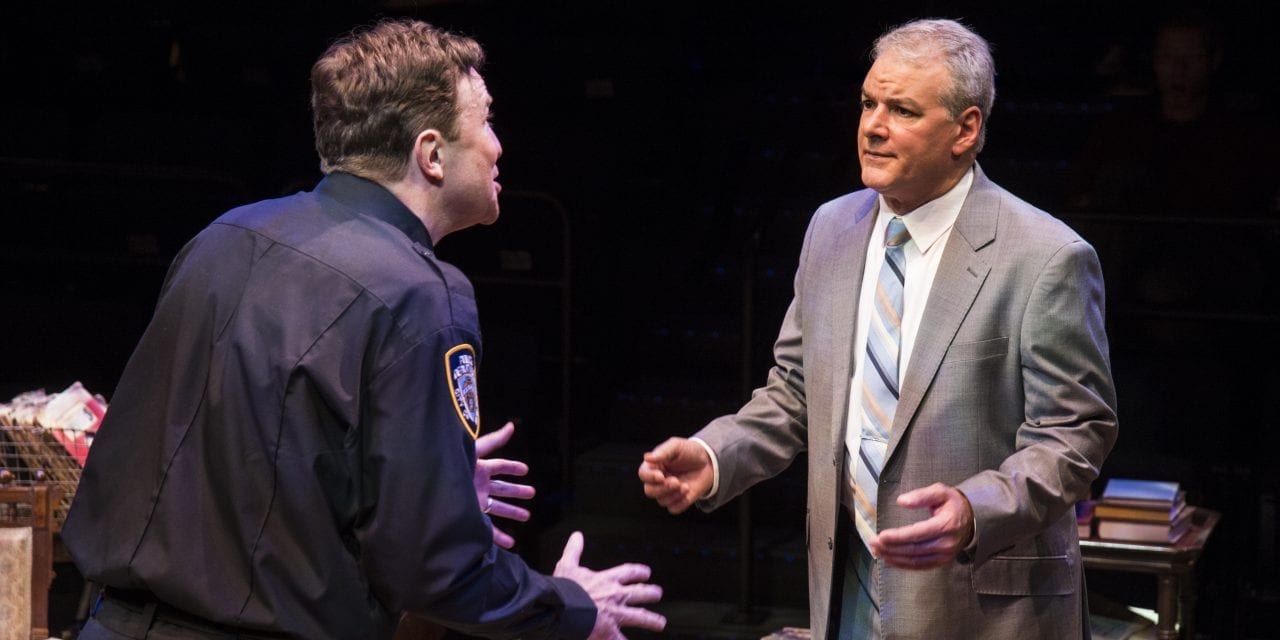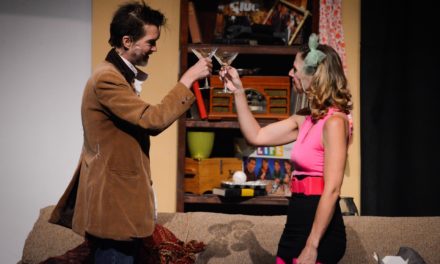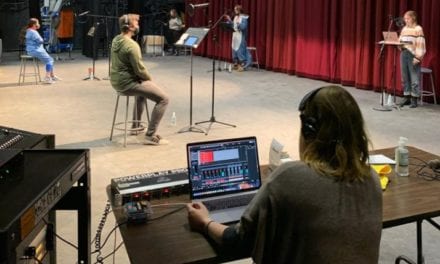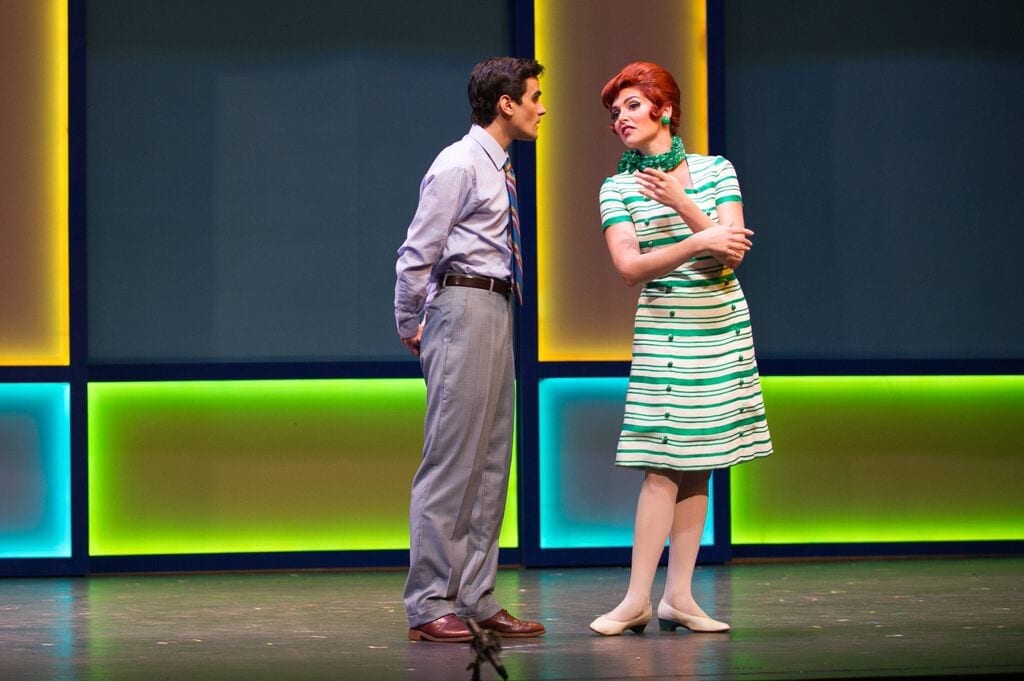CEDAR CITY — Arthur Miller is best known for classics like The Crucible and Death of a Salesman. Lesser known is The Price, a brutally realistic family drama about the shallowness of consumerism and the need for forgiveness. The Utah Shakespeare Festival has a stellar production of The Price that show audience members why Miller belongs in the pantheon of the great American playwrights.

Show closes October 12, 2019.
The Price tells the story of two estranged brothers, Victor and Walter Franz, who have not spoken in 16 years. Victor is a police officer who gave up his plans for a college education and a career as a professional so that he could care for his elderly father. The years as a caregiver required tremendous personal sacrifice from Victor, while his brother Walter became a surgeon and scientist, contributing a pittance to their father’s upkeep and rarely visiting. As Victor and Walter must sell the remaining assets of their late father’s estate (mostly furniture), the circumstances and memories reopen old wounds between the two brothers.
The staging by Kathleen F. Conlin is almost disturbing in its realism and intimacy. In the small space and theatre-in-the-round setting, there is no escape from the characters’ plight and emotions. Thus, the production conveys a feeling of being a guest in someone’s home as they fight, oblivious to the awkwardness it creates for the guests. The Price is not a flashy show, so Conlin’s triumph in directing was not in unleashing stage tricks or reinventing the play. Instead, she—wisely—trusted the script and the built rich relationships among the characters to let the emotional impact of the play manifest itself. Conlin’s genius was in the subtle decisions, such as having Solomon be the only character to sit in the deceased father’s chair, which gave the appearance of Solomon holding court over the bickering brothers (and provided some symbolism, to boot).

Jaqueline Antaramian as Esther Franz and John G. Preston as Victor Franz in the Utah Shakespeare Festival’s 2019 production of The Price. (Photo by Karl Hugh. Copyright Utah Shakespeare Festival 2019.)
John G. Preston, in the role of Victor Franz, excels at showing the character’s indecision, especially in the first act as he putters around the furniture in the old attic where he cared for his father for years. Preston showed clearly how passive Victor is, whether it was in the body language of pacing the stage with arms folded or the eagerness in acquiescing to the appraiser’s initial buying price for the furniture. After Walter’s arrival, Preston showed Victor’s psychological pain through facial expressions that showed years of contempt and bitterness, increasing my pathos for the character.
Jacqueline Antaramian gives an impassioned performance as Esther Franz, Victor’s wife. Antaramian’s opening scene showed Esther’s angsty demeanor through hand wringing and the nervous pacing as she discussed what she and Victor could do with a windfall of cash. In every scene, Antaramian found the right balance for Esther: prodding but not shrewish, loving but not mindlessly submissive, and emotional but not maudlin. But the most noteworthy portion of Antarmaian’s performance was the tour de force when Esther showed how betrayed she felt by Victor’s devotion to his father (instead of her) and how that had sapped him of ambition for years afterward.
A wonderful treat in this cast is Armin Shimerman in the role of Gregory Solomon, the appraiser and furniture dealer whom Victor called to help liquidate the estate. Shimerman’s character provides all the comic relief in the play, and his impeccable timing and delivery often broke the rising tension among family members. The flawless Eastern European accent also emphasized his status as an outsider and neutral party in the family discussions. I also appreciate how Shimerman steered the character away from a negative caricature by giving him emotional depth as Solomon talked about his deceased daughter. The interest that Solomon showed towards the Franz family drama also did much to humanize him and prevent Solomon from being merely a self-interested, greedy businessman.

Armin Shimerman as Gregory Solomon in the Utah Shakespeare Festival’s 2019 production of The Price. (Photo by Karl Hugh. Copyright Utah Shakespeare Festival 2019.)
In the role of Walter Franz, Andrew May rounds out the cast. May gives an earnest sincerity to Walter’s overtures of peace. May is especially effective at portraying his character’s emotional vulnerability that comes from hard experience and suffering. Much of Franz’s backstory of change is psychoanalytic claptrap, but May sells it well and makes it abundantly clear that Franz is a changed man. May and Preston are a believable set of brothers, and May’s stubbornness at the end when Walter refuses to be ashamed for his actions showed why the estrangement had lasted so long.
The technical elements also contributed to the realism of the play. The set (designed by Tim Brown) was strewn with old furniture that served as a constant reminder of the past. The northwest-to-southeast aisle bisected the stage and served as a useful axis for the action, sometimes dividing actors from one another but also giving a useful avenue for movement when needed. Bill Black‘s costume designs were faithful to the period; most notable was Esther’s perfectly tailored suit. The fashionably turned up sleeves, the shirt collar outside of the jacket, and pill box hat were the most prominent reminder of the 1960s setting of the play. Finally, Donna Ruzika‘s lighting was perfectly nuanced and changed to show the shifts in the interpersonal dynamics when a character entered the stage.
The Anes Studio Theatre is the perfect setting for an family drama with a cast of four. In this space, Conlin has cultivated the most credible acting I have seen on stage in years. The performances are almost cinematic in the subtlety and the believability of emotions that Conlin coaxed from her actors. The Price is essential viewing for anyone who enjoys basking in the presence of supremely talented actors who portray genuine emotion and relationships on stage.





